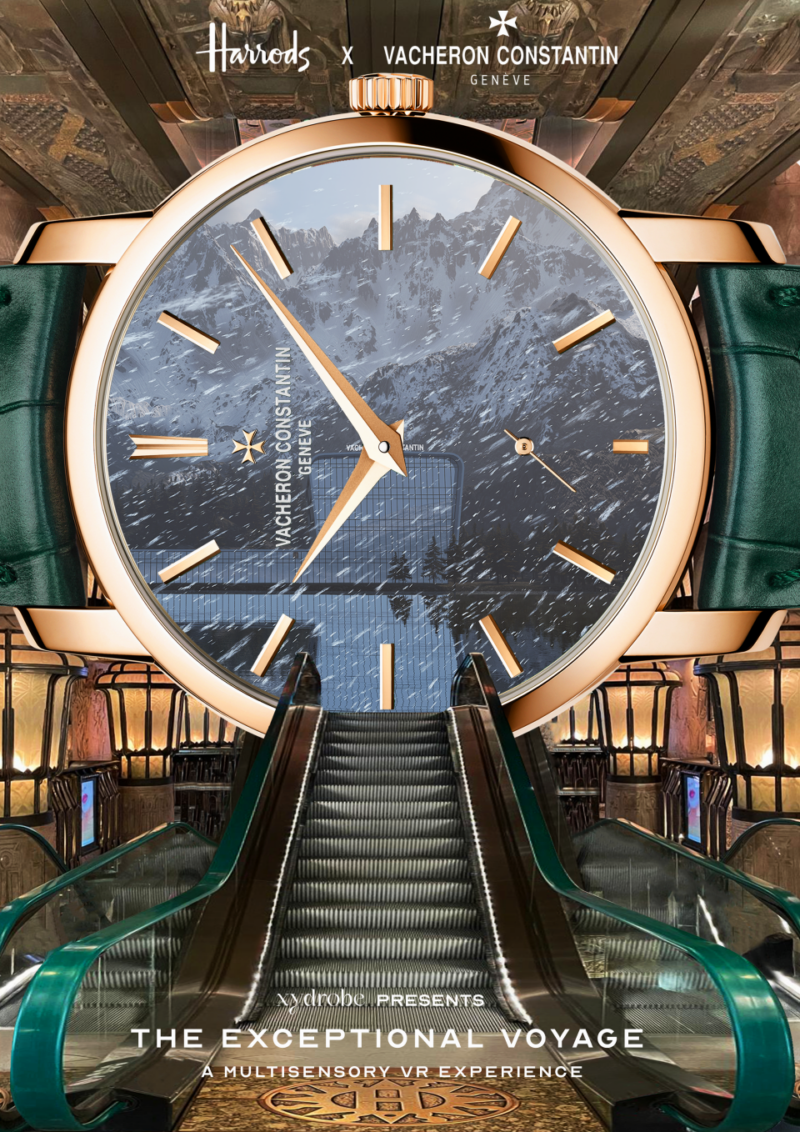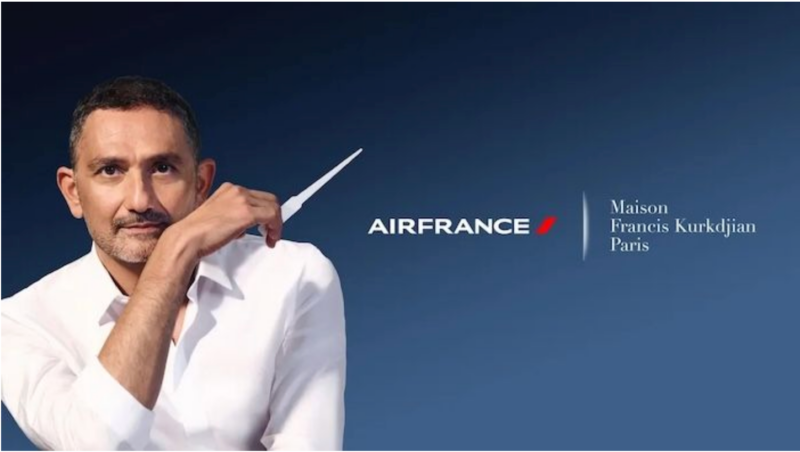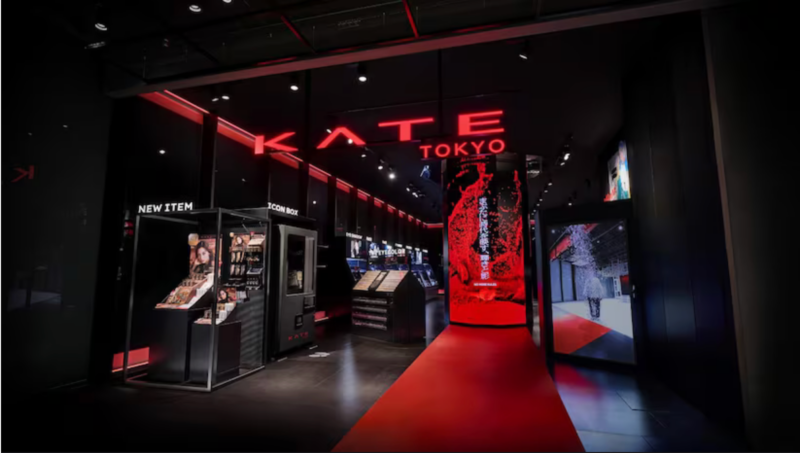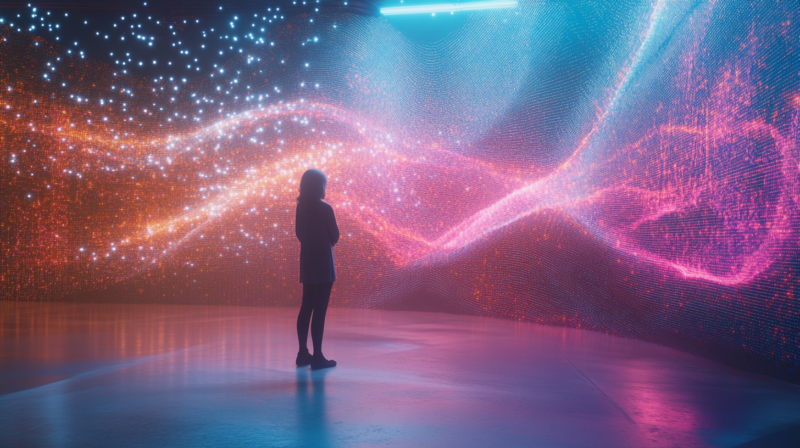In this article:
I recently visited a town where I lived for several years as a young adult. While there, I made sure to stop by all my formerly beloved spots and check out businesses that had opened since I left. Despite anticipating that trip for months, I underestimated the power of multisensory design in helping me recall my favorite places.
That happened most powerfully when I stepped into a tea shop and restaurant. Vibrant and highly detailed wall paintings captured my attention as I stepped inside, and the smells of rich blends tempted me as I listened to the staff preparing fragrant beverages and delicious dishes for customers. The comfy couches and low lighting showed this was a space designed for relaxation.
The friendly staff capped off the experience, and their warm attitudes made me feel like I had never left, despite my last visit being more than a decade ago. This unforgettable experience showed me how multisensory design can turn good experiences into outstanding ones.
What Is Multisensory Design?
Multisensory design involves creating immersive experiences people can enjoy with several senses. It also accounts for how the senses are often linked and cause distinct reactions.
For example, when someone walks into a bakery, the treats for sale may catch their attention first. However, they may also smell items in the oven or hear the sounds of bakers kneading dough to replenish the most popular options. Although many of these experiences happen unconsciously, patrons often recall them when evaluating the overall quality of their visits.
Branding professionals have capitalized on multisensory design while realizing its powerful effects. It’s one thing to see a tourism board’s full-color ad of a gorgeous island destination while waiting in an airport lounge. What if you could also feel the sand under your feet and hear the sound of crashing waves while sipping a tropical beverage?
A well-crafted multisensory design involves several senses to help you imagine yourself in a different, pleasurable situation. Then, you’ll hopefully want to take an action that brings that possibility closer to reality, whether that means signing up for the tourism board’s email list, picking up a free guidebook or going through the first steps of booking a trip.

Get 300+ Fonts for FREE
Enter your email to download our 100% free "Font Lover's Bundle". For commercial & personal use. No royalties. No fees. No attribution. 100% free to use anywhere.
Those who excel in creating multisensory design experiences understand the importance of a detail-oriented approach. Web designers similarly understand how tiny, thoughtful elements combine to make big impacts. That’s why page-refresh animations, form field validations and subtle cursor changes have become so popular in well-designed ones. Paying attention to the smaller things also matters in multisensory design.
Rich and positive experiences create lasting memories. Those associations can encourage stronger loyalty and repeat purchases in customers.
Getting Inspiration From Real-Life Examples
If you’re interested in becoming more familiar with multisensory design, one of the best ways to do so is to see what other brands have done. Let’s look at some examples now.
Celebrating History With an In-Store Cinema Experience

Source: https://uk.style.yahoo.com/vacheron-constantin-debuts-multisensory-vr-040100680.html
The Harrods department store celebrated its 175th anniversary in 2024, and there were many special events to mark the occasion. One of them was an in-store cinema experience where visitors could see the brand’s history through the perspective of Vacheron Constantin — a Swiss watch brand. This offering coincided with a special-edition piece sold exclusively by Harrods.
As you can see from the design on the poster above, those involved with this event set the mood by indicating people could board an escalator and get transported to a new world by going through a watch face. The virtual-reality-driven experience they enjoyed featured increasingly surreal landscapes coupled with aromas and sensations. The cinema accommodates up to 20 guests at a time and strongly demonstrates luxury storytelling.
The attendees also use headsets that mimic sensations such as wind or changing temperatures, reinforcing the idea that they have gone far beyond the department store cinema. Those designing this experience were particularly interested in building something for shoppers to enjoy in existing stores rather than separate locations. That approach captures the interest of those who initially become aware of the offering on shopping trips.
Consider doing something similar if you want to appeal to those who will come across the experience naturally rather than needing to know about it in advance and decide to enjoy it. The virtual reality element was also a good choice here. Analysts believe the market value of such technology will reach $52 billion by 2032, indicating its popularity.
Setting Expectations for Fantastic Flights

Source: https://www.aircraftinteriorsinternational.com/news/air-france-engages-the-senses-with-af001-signature-fragrance.html
Thanks to delays, overpriced airport food and long lines at security checkpoints, flying has become something many would rather avoid. However, Air France executives want to change that, believing that making travelers feel welcome is crucial. One element of their mission involved working with a master perfumer to create a signature scent people will experience when stepping into selected departure lounges.
Many of those offerings have other luxurious elements, such as spa treatments and sustainably sourced foods. While explaining the rationale behind the specially crafted perfume, a customer experience executive said the addition completes the five-senses immersion after boarding flights. They taste foods served in cabins and lounges, hear the airline’s curated playlists, relax in the comfortable seats, and see the thoughtful designs of the cabin attendants’ attire, plane interiors and lounge environments. Now, they can also expect a pleasant aroma to begin their journeys.
Anyone who visited an Abercrombie & Fitch store as a teenager probably remembers the distinctive smell wafting from those retail outlets. Executives knew scents were powerful for introducing and shaping the brand experience. It also helped that people could buy the perfumes in each outlet.
However, scent is even more effective in Air France’s case because it sets the tone for the upscale experiences travelers can enjoy while on flights. Extending the memorable perks while designing some of its lounges tells them they can expect consistently excellent experiences.
Research shows 80% of customers think created experiences are as important as a business’s quality. This airline gives plenty of examples that demonstrate how to get that right.
Upgrading Store Experiences to Create Brand Fans

Source: https://www.cosmeticsdesign-asia.com/Article/2024/07/30/KATE-s-first-ever-flagship-entices-digital-natives-with-multi-sensory-experience/
KATE is a well-known brand in the Japanese market, and although it launched in 1997, executives only opened its first global flagship store in 2024. The leaders recognized customer preferences have changed significantly since its establishment, and they wanted the retail outlet to reflect that reality.
The store’s designers emphasized individuality and immersed shoppers’ senses in an exciting environment that blends digital and physical aspects. Going all out with this flagship store was especially important because it signaled a transition for those who already know the brand or are interested in trying it.
Before it opened, people primarily bought KATE products in drugstores and specialty cosmetics retailers. This new store enabled designers to capitalize on creating a well-defined, brand-centered experience. For example, visitors can use a makeup vending machine that contains 26 shades so they can personalize their quad palettes. There is also a virtual e-commerce experience, and people can get beauty advice from well-informed staff or on-site AI analysis tools.
Whether someone already knows the KATE company or is curious about it, this flagship store keeps them interested and entertained. That’s especially important in our fast-paced world where many find their attention pulled in all directions.
Using One Sense as a Branching-Off Point

Source: https://www.worldofcoca-cola.com/explore-inside/explore-scent-discovery
Some enterprises are so well-established and beloved worldwide that they have dedicated attractions that appeal to the masses. Such is the case with Coca-Cola and the World of Coca-Cola museum in Atlanta, Georgia.
As you can see from the snapshots above, this destination offers screens, interactive exhibits and more. Context and environment are two essential considerations when designing for nontraditional media.
When you’re also applying multisensory concepts, the efforts may be most impactful if you focus on a single sense and build off of it when finding feasible ways to engage other perceptual capabilities. That was the approach taken when creating the Scent Discovery exhibit, which opened at World of Coca-Cola in 2023 as a tribute to the beverage’s founder, who used his sense of smell to identify the original formula’s ingredients.
Part of the experience gives people ideal photo opportunities by letting them step into a Coca-Cola bottle against the backdrop of the bubbles inside carbonated drinks. Additionally, they can sniff more than 20 globally sourced aroma profiles to learn about scent categories. One of the final experiences involves tasting a drink that includes favorite smells they learned about while going through the exhibit.
The designers behind this experience hoped to build experiences that reminded visitors how smells can trigger recollections or create new, positive memories. The numerous exciting and highly interactive offerings here encourage having fun through on-brand experiences.
How Will You Use Multisensory Design?
Draw from these strong examples as you consider how to apply multisensory design principles in your upcoming projects. In addition to following some of the best practices here, keep the intended audience in mind and consider how you might appeal to people of different ages or interests for maximum effect.

